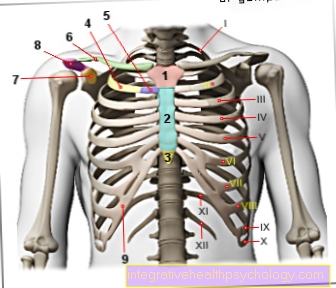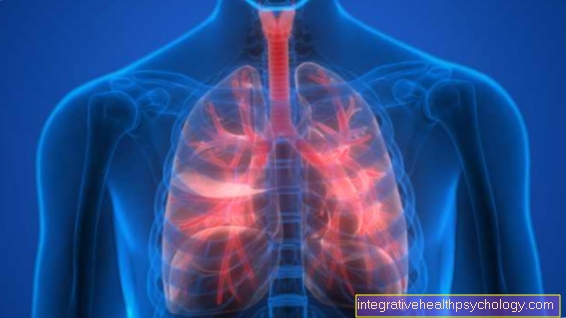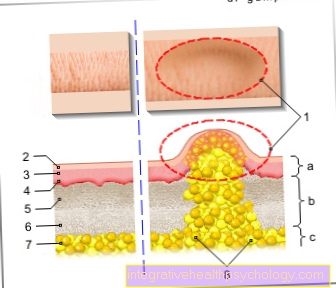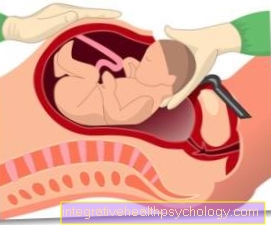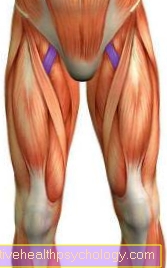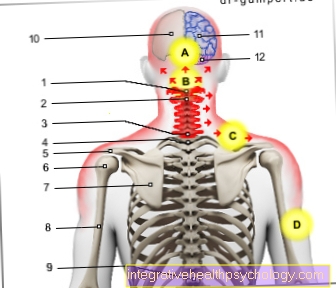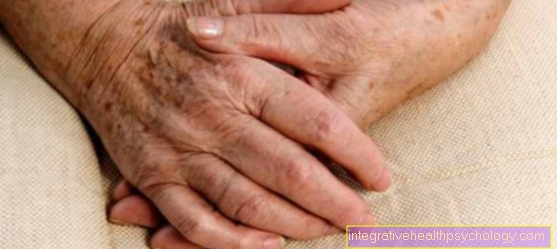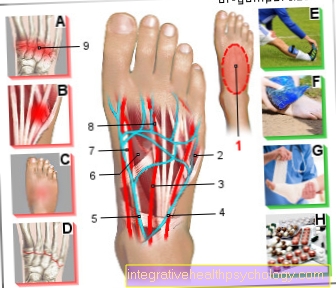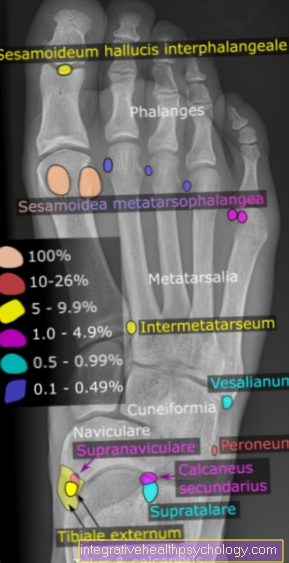Symptoms of gout
Complaints and symptoms
Symptoms of an acute attack of gout
The first gout attack usually manifests itself at night as a sudden (highly acute), very painful joint attack (arthritis).
In the vast majority of cases, only one joint is initially affected (Monarthritis), in 50% of the cases this is the metatarsophalangeal joint of the big toe (so-called. Podagra).

Other joints that are also frequently affected are the metatarsophalangeal joint (chiragra), as well as the ankle and knee joints.
An attack lasts a few hours to days if left untreated. The affected joint shows the typical signs of inflammation:
- Pain (Dolor)
- warmth (Calor)
- redness (Rubor)
- swelling (Tumor)
- and is very sensitive to movement and touch (functio laesa).
You may also be interested in this topic: Burning pain in the knee
Chronic symptoms of gout
In the course of untreated gout, more and more joints are affected, and permanent joint changes eventually occur. In addition, symptoms such as fever or chills can occur.
In addition, so-called gouty tophi can develop. These are whitish nodules just below the skin that can break open. They usually appear on the auricle, sometimes on the hand or foot.
Finally, there is a possibility that uric acid crystals may be deposited in the kidney, which can lead to acute kidney failure (renal insufficiency).
Course of gout
Normally there is a balance between the build-up of uric acid and the excretion of uric acid via the kidneys in healthy people.
Normal values in the blood:
- Men: 3.5 and 7.0 mg / dL
- Women: 2.5 and 5.7 mg / dL
Elevated uric acid levels that are above the specified reference levels do not immediately and do not necessarily lead to gout. However, the higher the uric acid concentration, the greater the likelihood of gout disease.
Stages of gout:
- Stage 1: Too much uric acid (hyperuricemia) with no signs of disease (symptoms)
- Stage 2: Acute attack of gout
- Stage 3: symptom-free interval between two attacks
- Stage 4: Chronic gout with irreversible (irreversible) changes in the joints
The kidneys can be damaged even in the early stages. The occurrence of Kidney stones and Urinary tract infection. The last stage is rarely observed today.
This usually affects patients in whom the diagnosis is made very late or who are not following consistent therapy (non-compliance).
diagnosis
The diagnosis of gout is usually based on the physical appearance (clinical appearance) that are characteristic of the disease.
According to the German Rheumatological Society, the diagnosis is considered likely if:
- the symptoms develop rapidly within two hours
- At the beginning only one joint (mostly the big toe) was affected
- if the symptoms go away again within one to two weeks or
as secured if:
- In addition, increased uric acid levels in the blood are detected and the symptoms improve promptly after typical gout therapy (administration of colchicine or NSAIDs, ibuprofen, diclofenac).
- Uric acid crystals can be detected in the synovial fluid.
If a uric acid metabolism disorder is suspected or if symptoms of acute gout are present, laboratory tests are standard.
With gout are the uric acid levels higher in blood and those lower in urine (decreased excretion) than normal.
In some cases (approx. 5%), however, the disease is associated with normal uric acid levels.
As the disease progresses, x-rays may reveal changes in the joints and bones, such as a reduction in the joint space, tissue growth, bone entophi (bone defects) or osteoporosis.

